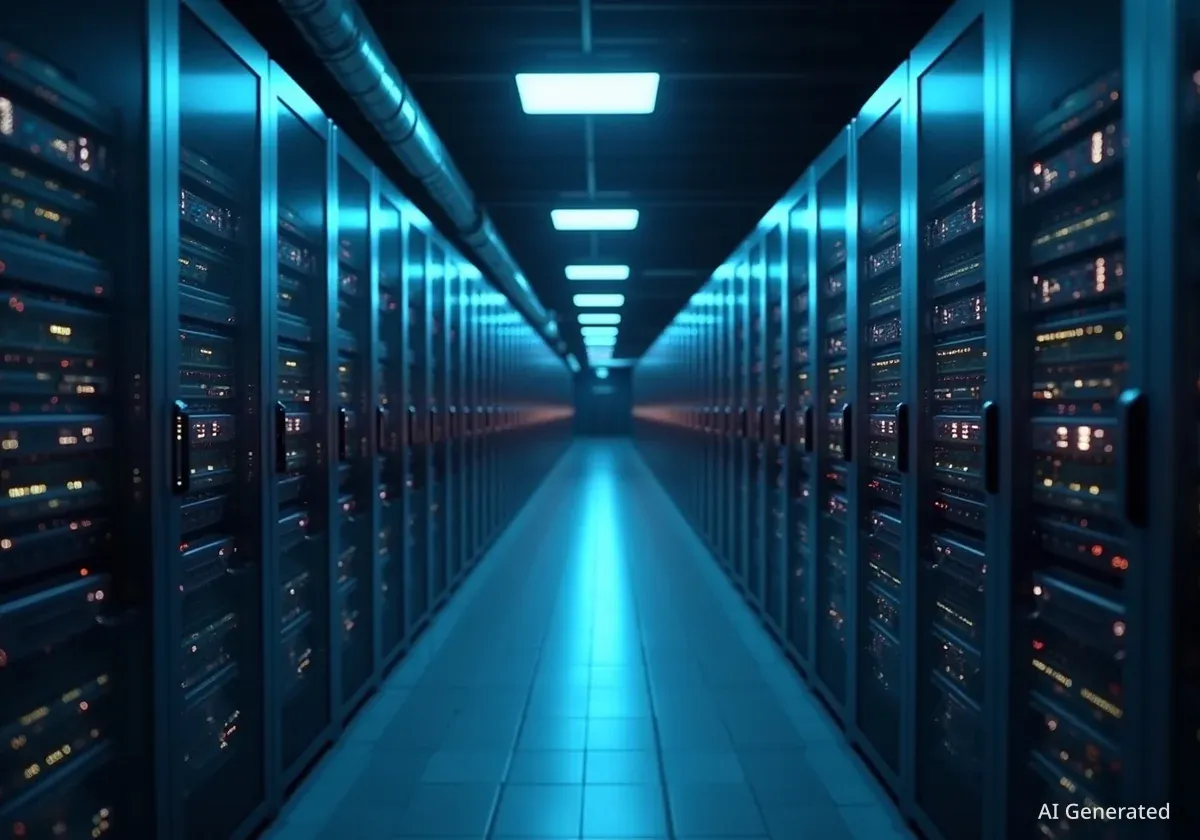OpenAI is pursuing a comprehensive strategy to establish itself as the central platform of the artificial intelligence era, a move analysts compare to Microsoft's dominance with its Windows operating system in the personal computer market. This ambition is supported by massive infrastructure investments and the launch of new tools designed to shift user interaction from passive consumption to active creation.
The company's leadership, including CEO Sam Altman, is making significant, long-term bets on future AI demand, positioning OpenAI to control key parts of the technology stack, from hardware suppliers to software developers. This approach aims to create an indispensable ecosystem where OpenAI captures value at multiple levels.
Key Takeaways
- OpenAI is modeling its business strategy on Microsoft's Windows, aiming to become the essential operating platform for the entire AI industry.
- CEO Sam Altman confirmed the company is making "company scale" bets on infrastructure to meet anticipated future demand for AI services.
- The text-to-video tool Sora represents a strategic shift, empowering users to become creators and potentially disrupting platforms focused on content consumption, such as Meta.
- The strategy involves influencing both the hardware layer, including chipmakers like Nvidia, and the software application layer built on top of its models.
The 'Windows for AI' Playbook
Industry analysts are increasingly framing OpenAI's strategy through the lens of historical technology platforms, with Microsoft Windows serving as a primary comparison. In the PC era, Windows created a powerful duopoly by controlling the operating system that connected hardware manufacturers with software application developers. This central position allowed Microsoft to set standards and capture a significant portion of the industry's value.
OpenAI appears to be following a similar playbook for the age of AI. The company's goal extends beyond developing advanced models like GPT-4. It aims to create a foundational layer that other companies must build upon. By becoming the essential platform, OpenAI could exert influence over both its suppliers and the developers who use its technology.
Understanding Platform Power
In technology, a platform is a system that allows others to build products and services on top of it. A successful platform, like Windows, Apple's iOS, or Google's Android, creates a self-reinforcing cycle. More users attract more developers, which in turn creates more applications, making the platform even more valuable to users. This dynamic often leads to a winner-take-most market.
This strategy positions OpenAI to extract margin from companies across the entire AI value chain. This includes hardware providers like Nvidia, whose GPUs are essential for training AI models, as well as the countless software companies developing AI-powered applications. If successful, OpenAI would become the primary gateway to artificial intelligence, solidifying its market leadership for years to come.
Altman's Vision and the Trillion-Dollar Infrastructure Bet
The scale of OpenAI's ambition is matched by its investment strategy. In recent discussions, CEO Sam Altman has outlined a vision that requires an unprecedented buildout of AI infrastructure. He described the company's current investments as "company scale" bets designed to prepare for a future where AI is deeply integrated into both consumer and enterprise applications.
"It’s not like you use Google at home and a different company at work," Altman noted, highlighting his belief that a single, dominant AI platform will serve both markets. This perspective justifies the immense capital expenditure required to secure the necessary computational resources for tomorrow's AI models.
These plans are connected to reports of OpenAI seeking to raise vast sums of capital, with some figures reaching as high as $1 trillion for new infrastructure projects. While the final amount remains speculative, the direction is clear: OpenAI is preparing for exponential growth in demand for AI processing power.
According to Altman, the company's confidence is fueled by the rapid progress observed on the research side. He anticipates that future models will be significantly more capable and will require a new level of computational infrastructure that does not yet exist. By investing heavily now, OpenAI aims to ensure it has the capacity ready when these advanced models are deployed.
The Cost of AI
Training a large language model like GPT-4 is estimated to cost tens of millions of dollars in computing power alone. As models become more complex, these costs are expected to rise dramatically, making access to massive-scale infrastructure a key competitive advantage.
Whether these substantial bets will pay off remains a central question for the tech industry. However, by pursuing such an aggressive investment strategy, OpenAI not only prepares for future demand but also positions itself as the primary destination for speculative capital flowing into the AI sector.
Sora and the Shift from Consumption to Creation
A key component of OpenAI's strategy is not just improving AI capabilities but also changing how people interact with the technology. The introduction of Sora, a text-to-video generation model, marks a significant milestone in this effort. Unlike many previous AI applications that focused on information retrieval or content consumption, Sora empowers users to become active creators.
Early user engagement with Sora has been notably high. Sam Altman reported that approximately 30% of active users were also active creators with the tool. This statistic suggests a profound shift in user behavior. Instead of simply asking an AI to provide an answer, users are directing it to generate novel, creative works.
This transition from AI-enabled consumption to AI-enabled creation has several important implications:
- It unlocks new forms of creative expression for individuals without specialized skills in video production or animation.
- It increases user engagement and time spent within the OpenAI ecosystem as people experiment and share their creations.
- It generates a vast amount of new, AI-native content that can further enhance the platform.
This strategic move could pose a significant challenge to established technology companies, particularly those whose business models are built around user-generated content and social consumption. Platforms like Meta have historically relied on users sharing photos and videos of their real-world experiences. The rise of high-quality, easily generated AI content introduces a new form of media that could compete for users' attention and time.
The enthusiastic adoption of Sora indicates a large, untapped market for tools that unlock creativity. By providing a powerful yet accessible creative outlet, OpenAI is not only expanding its user base but also fundamentally altering the digital content landscape. This positions the company to capture a new and highly engaged segment of the market, further strengthening its platform ambitions.





